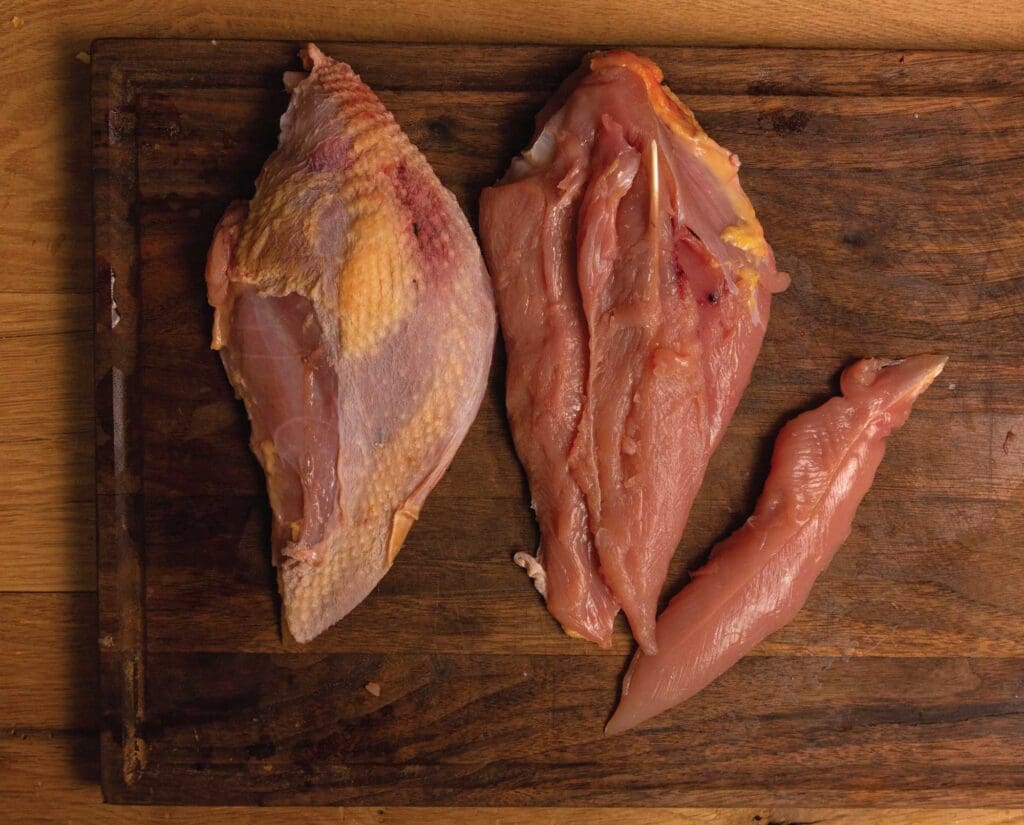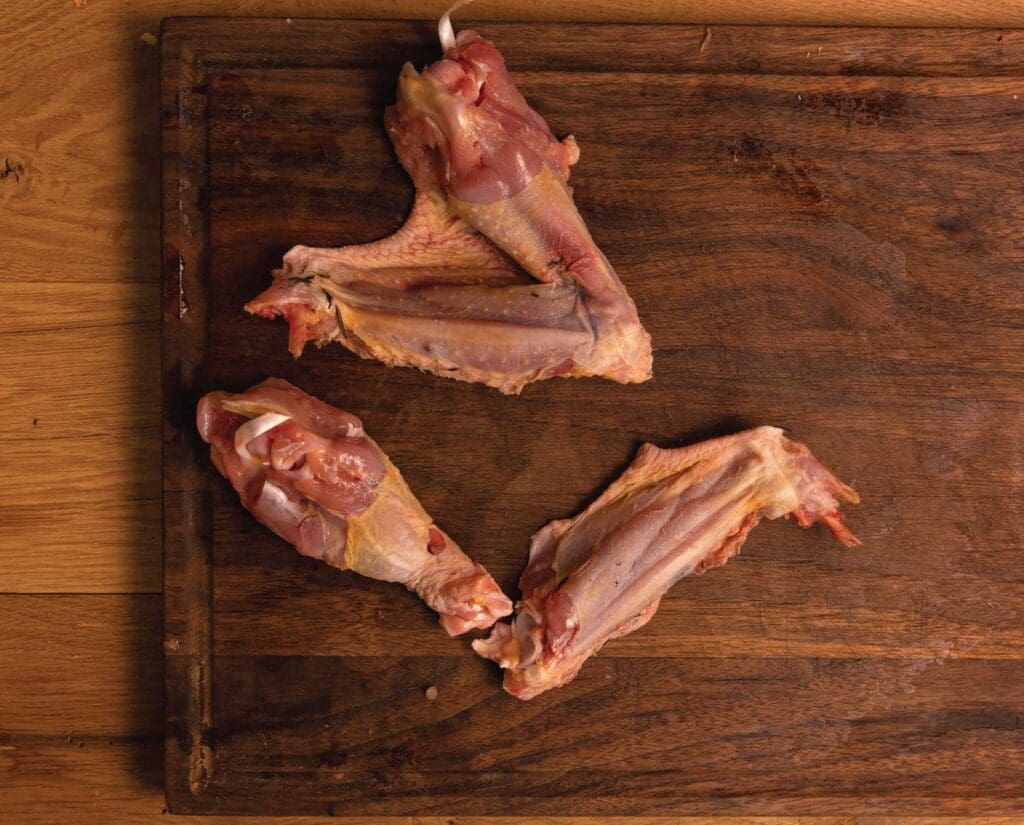Ah, wild turkey. The jewel in the crown of the game bird kingdom, with tender meat and a strong attraction to hunters After you’ve successfully bagged your bird, though, what happens next? Processing is the art that turns your trophy into a culinary masterpiece.
Fear not, fellow hunters, for I’ve compiled the ultimate guide to processing wild turkey, ensuring you maximize every ounce of deliciousness. So, grab your sharpest knife, a dash of patience, and let’s dive into the world of turkey butchery.
The Essential Tools for the Job
Before we begin, let’s gather our arsenal:
- Sharp knife: A flexible, ultra-sharp knife is your best friend. It’ll navigate the curves and angles of the turkey with ease, leaving no meat behind.
- Cutting board: A sturdy cutting board provides a stable platform for your butchering endeavors.
- Gloves (optional): Protect your hands from the elements and potential bacteria with a pair of gloves.
- Paper towels or clean cloths: Keep your workspace and hands clean with absorbent paper towels or cloths.
Step-by-Step Guide to Processing Your Wild Turkey
Now, let’s get down to business:
1, The Breasts:
- The Key: A sharp, flexible knife is crucial for navigating the curves and angles of the breastbone.
- The Technique: Peel back the skin all the way up to the wing, ensuring you capture every bit of golden meat.
- The Pro Tip: For large toms, consider slicing each breast in half, creating two thick, condensed cuts and two wider, thinner cuts for different culinary applications.
2. The Legs (Drumsticks and Thighs):
- The Key: Separate the drumsticks from the thighs for distinct cooking methods.
- The Technique: Remove the legs by popping the hip joint and cutting from the inside of the leg. Separate the drumstick from the thigh by cutting through the knee joint.
- The Pro Tip: Remember, drumsticks require shredding due to their thick tendons, while slow-cooking the thighs eliminates chewiness and unlocks their deliciousness.
3 The Wings:
- The Warning: Be prepared for some work, as wings require plucking and skinning.
- The Technique: After removing the breast, pop the wing joint and cut it off the body. Separate the drumette (drumstick-shaped) from the flat (wingette) by popping and cutting through the joint. Pluck the small feathers and use your knife to remove the large primary feathers.
- The Pro Tip: While tougher than other cuts, wild turkey wings offer surprising meatiness and can be transformed into delicious buffalo wings with the right recipe and technique.
4. The Giblets:
- The Technique: Carefully slice into the bottom of the body cavity and remove the gizzard, heart, and liver.
- The Gizzard: Clean the gizzard by removing the grit and the thick inner liner. Rinse thoroughly and peel away the gray inner tissue and silver skin. Slice into thin chunks and soak in milk overnight before frying.
- The Heart and Liver: Slice and soak in milk overnight before frying.
- The Pro Tip: Enjoy the gizzard, heart, and liver with hot sauce for a unique and flavorful experience.
5. The Bones:
- The Potential: Utilize the bones for a rich and flavorful homemade turkey stock.
- The Technique: Collect the neck, keel bone (sternum), and thigh bones from large toms.
- The Pro Tip: Use the remaining carcass from a Thanksgiving-style roast to create a delicious and comforting turkey stew.
Additional Tips and Tricks:
- Practice makes perfect: Don’t be discouraged if your first attempt isn’t flawless. With practice, you’ll become a seasoned turkey butcher in no time.
- Stay clean: Wash your hands and tools frequently to prevent contamination.
- Remove pellets: Check for stray pellets in the meat, especially from small, hard TSS pellets. A metal detector can be helpful.
- Trim and wash: Remove any bloodshot or questionable-looking meat to preserve the taste and quality of the remaining cuts.
- Butcher immediately: Process your turkey as soon as possible, especially if you’re harvesting the giblets.
- Air dry the meat: After cleaning, pat the meat dry and let it air dry on a rack before freezing or cooking.
Processing a wild turkey might seem daunting at first but with the right tools techniques, and a bit of practice, you’ll be able to transform your catch into a culinary feast. Remember, every part of the turkey offers its own unique flavor and texture, so don’t be afraid to experiment and discover your favorite ways to enjoy this delicious game bird.
Happy butchering, and may your wild turkey adventures be filled with success and delicious rewards!
Do I Pluck or Skin a Wild Turkey?
In past articles, I advocate for plucking when possible. Furthermore, I’ve advised against gutting the bird before plucking because skin tears could make the process more challenging. When it comes to wild turkeys, you can actually gut the bird before plucking it, depending on how tough the skin is. Additionally, since these large birds are well-insulated and retain a lot of heat, you should gut the bird within a few hours, especially if a warm day is forecast.
And, yes, you should absolutely save your giblets. More on that here.
The skin of wild turkeys is flavorful, but for these birds, I don’t think plucking is necessary. In terms of the wings, though, plucking those is worth the effort. This is because of the skin-equals-flavor argument and because skinning (e. g. , knife work) along the wings runs the risk of damaging meat.
But the thighs and legs require low-and-slow cooking techniques. Using these methods could cause the skin to become gelatinous and give your wild turkey dish an undesirable texture. Regarding the breasts, skinning or plucking them is up to you. In the butchering section, I’ll go over why you might not need to go to the trouble of plucking wild turkey breasts.
In case you choose to remove the feathers from your bird, you have two options: either scald it or dry pluck it, which involves submerging the entire bird in water heated to 150 degrees Fahrenheit several times until the feathers effortlessly come off. Once they do, you’re ready to pluck the rest of the bird. Remember that the wing feathers might not come off easily after three to five minutes of submersion.

Butchering Wild Turkey Thighs and Legs
I “skin” turkey legs and thighs, which means I make a tiny incision on each leg to split the skin and pull it off. Next, I fold the thighs backward, popping the socket-shaped bones from the hip joints. I start slicing with my knife toward the base of the bird’s back, attempting to go as far back as I can. This helps to remove as much thigh meat as possible. Continuing to fold the thigh backward might help you as you cut, too. Doing so will show you which line to follow.
Once the thigh is freed from the bird’s body, pull off any remaining skin. Roll the base of the leg there in an attempt to crack the foot joint and remove the feet. The thigh and turkey leg should be separated by carefully rolling the leg back and forth at the thigh joint. Once it’s loose, use your knife to sever the tendons.

How To Butcher A Wild Turkey * STEP BY STEP *
FAQ
How do you process wild turkey meat?
What to do with a wild turkey after you shoot it?
Is wild turkey good to eat?
How do you cook wild turkey so it’s not tough?
How do you butcher a wild turkey?
Butcher a wild turkey right away, especially if you are harvesting innards. After each cut is removed from the turkey, clean and wash the meat thoroughly. Make sure to wash off blood, feathers, and dirt. Pat the meat dry and also let it air dry on a rack before freezing or cooking. There’s more meat on a wild turkey than the breast and legs.
How to cook wild turkey thighs?
Low and slow are the keys to cooking wild turkey thighs. Alex Robinson The leg meat on wild turkeys can be juicy, tender, and delicious, as long as you treat it right. Pulling them off your bird is pretty simple. Skin down to the knee joint and peel away the skin from both sides of the leg.
How do you field dressing a wild turkey?
Field dressing a wild turkey is similar to any poultry butchering. However, we like to remove the breast and save the legs and thighs separately. To do this, you will need a skinning gambrel. Wire the turkey’s legs apart on the gambrel. Then pluck off the breast feathers.
What is a wild turkey?
When people most people think of turkey, domestic or wild, they envision a whole bird. The skin is crispy, caramelized from a long oven roast, and stuffed to the brim as a dinner table centerpiece. This was the picture I had in my mind when I bagged my first wild turkey over 12 years ago. I treated it no differently than a Thanksgiving bird.
